Easy Kimchi Tuna Jumeokbap: Korean Rice Balls
This Korean Jumeokbap recipe is a quick and easy Korean comfort food made with just kimchi and canned tuna, ready in 10 minutes!
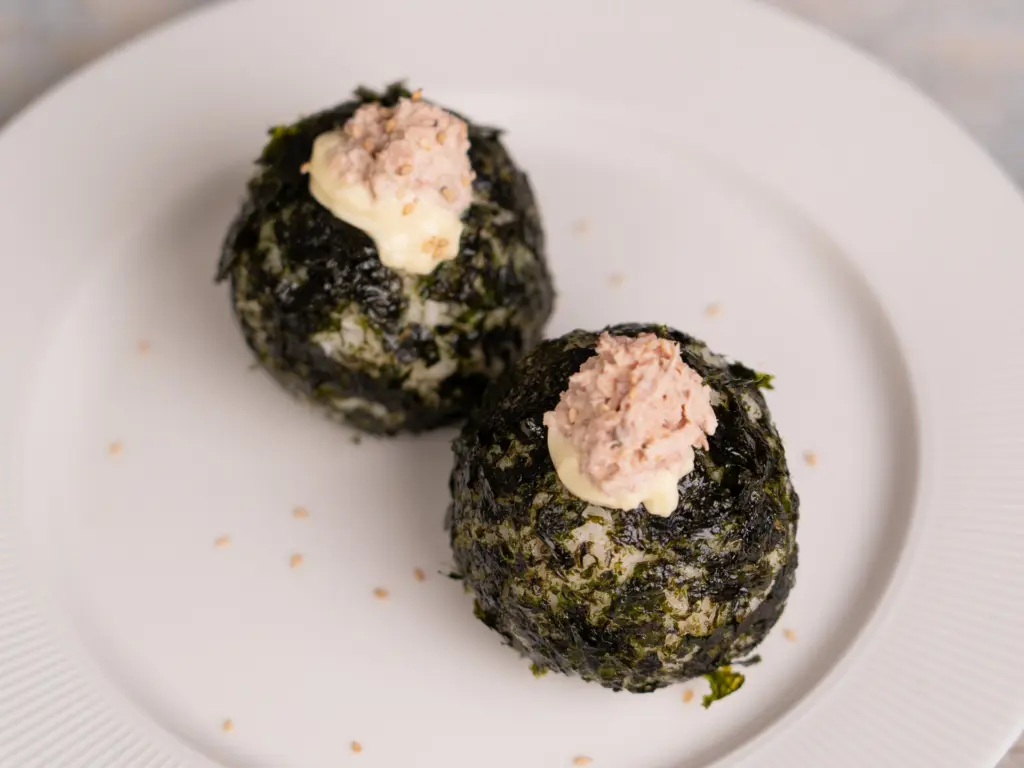
What is Jumeokbap? 주먹밥
Jumeokbap, literally meaning “fist rice,” is Korea’s version of rice balls. They are named after the way the rice is shaped into round balls, resembling a fist. Jumeok means “fist,” and bap means “rice.” Inside, you’ll often find flavorful fillings, such as meat and/or vegetables, making it a delicious and satisfying snack.
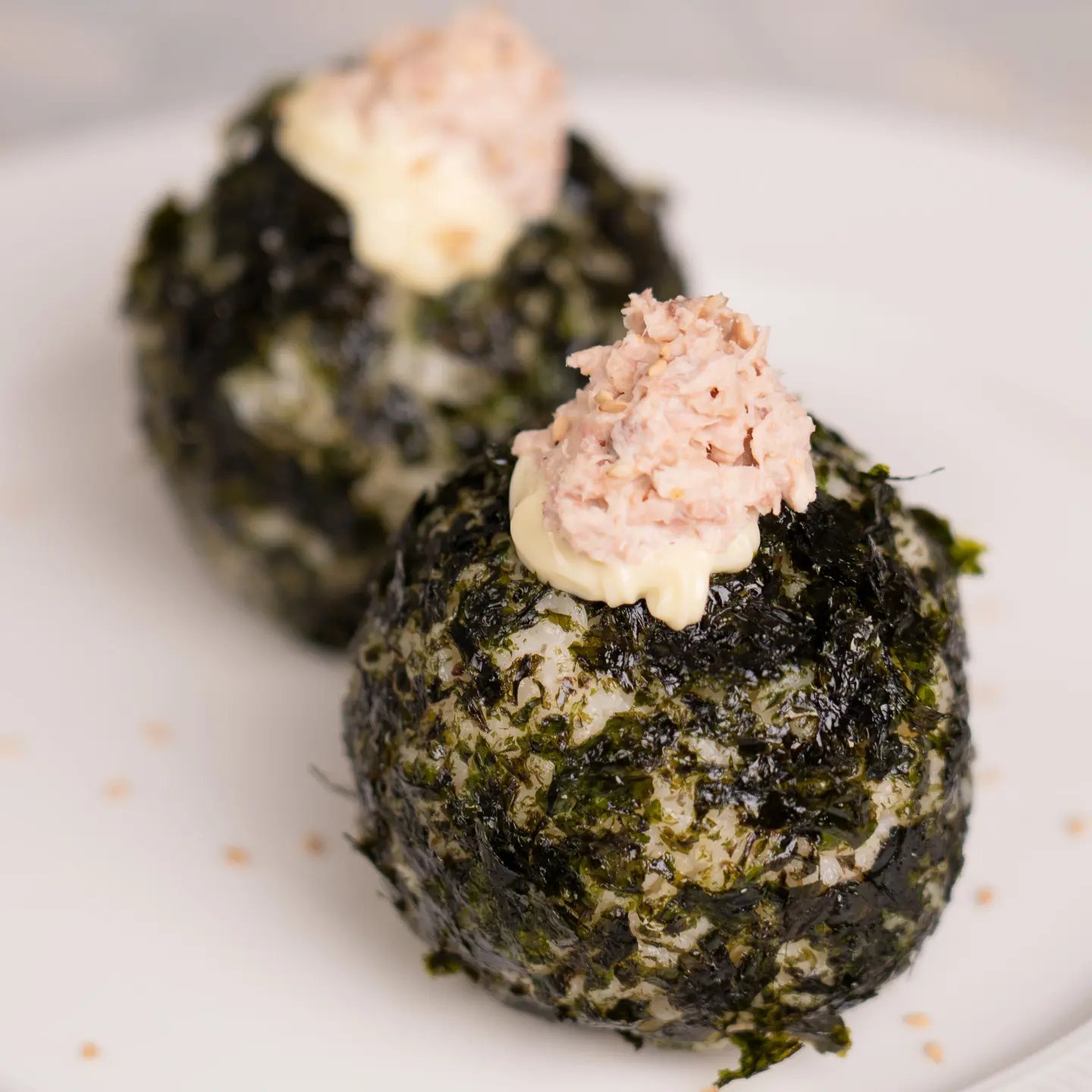
Jumeok bap is quite similar to Japan’s onigiri or Italy’s arancini. In Korea, people often enjoy jumeok bap for a quick breakfast or pack them in lunchboxes for picnics and outings. They’re simple, tasty, and easy to carry—the ultimate Korean comfort food on the go.
Differences from Onigiri
Japanese onigiri are usually made by placing a filling, such as meat or vegetables, inside rice, shaping the mixture into a triangle, and wrapping it in a sheet of seaweed. In Japan, there is also a method where the rice ball is grilled after being shaped.
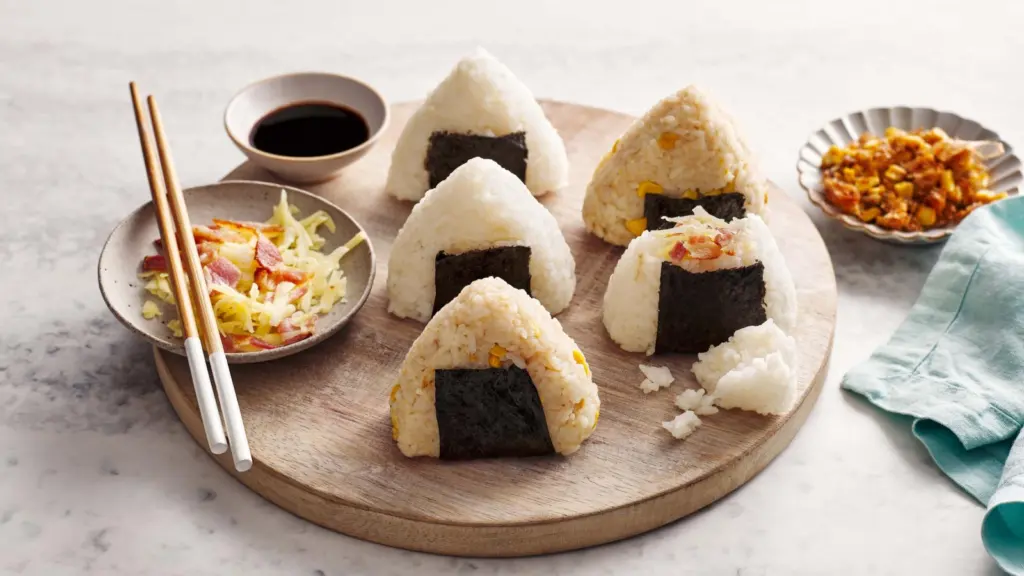
In contrast, Korean jumeok bap is not grilled. Instead, the rice is seasoned with salt and sesame oil and shaped into a ball. It can be made small, around 4 cm in diameter, or large, about the size of a fist. Sometimes, fillings like meat or vegetables are mixed directly into the rice; other times, they’re placed inside the rice ball.
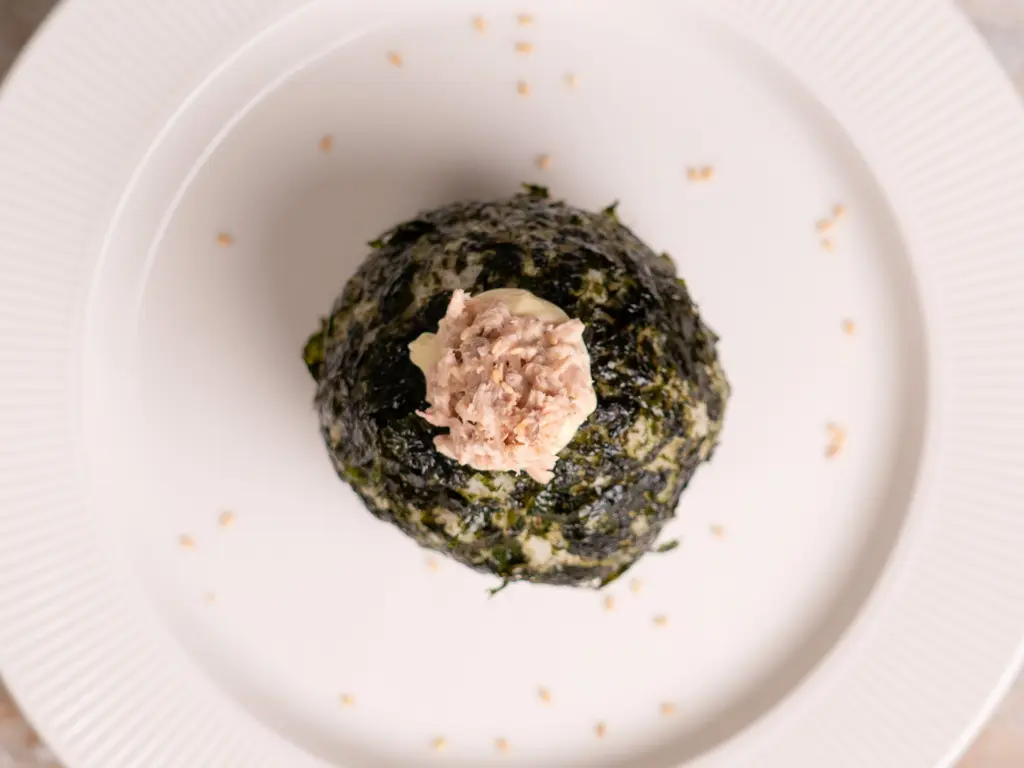
Another significant difference lies in how seaweed is used. While Japanese onigiri are wrapped in large sheets of seaweed, jumeok bap uses crushed seaweed. The seaweed is either mixed into the rice or rolled on the outside to coat the rice balls.
Korean Rice Balls Recipe
- Rice, Salt, and Sesame Oil
Season the rice with a pinch of salt and sesame oil, just as you would for kimbap. Be careful not to make it too salty. Since the fillings, such as kimchi and tuna, tend to be salty, and we’re also using seasoned seaweed, the rice should be lightly seasoned to balance everything out.
- Kimchi and Tuna
Today’s fillings are stir-fried kimchi and tuna. Stir-frying the kimchi deepens its flavor while also adding a nice texture and saltiness to the rice ball. The tuna is mixed with mayonnaise to create a creamy, savory filling that blends well with the kimchi.
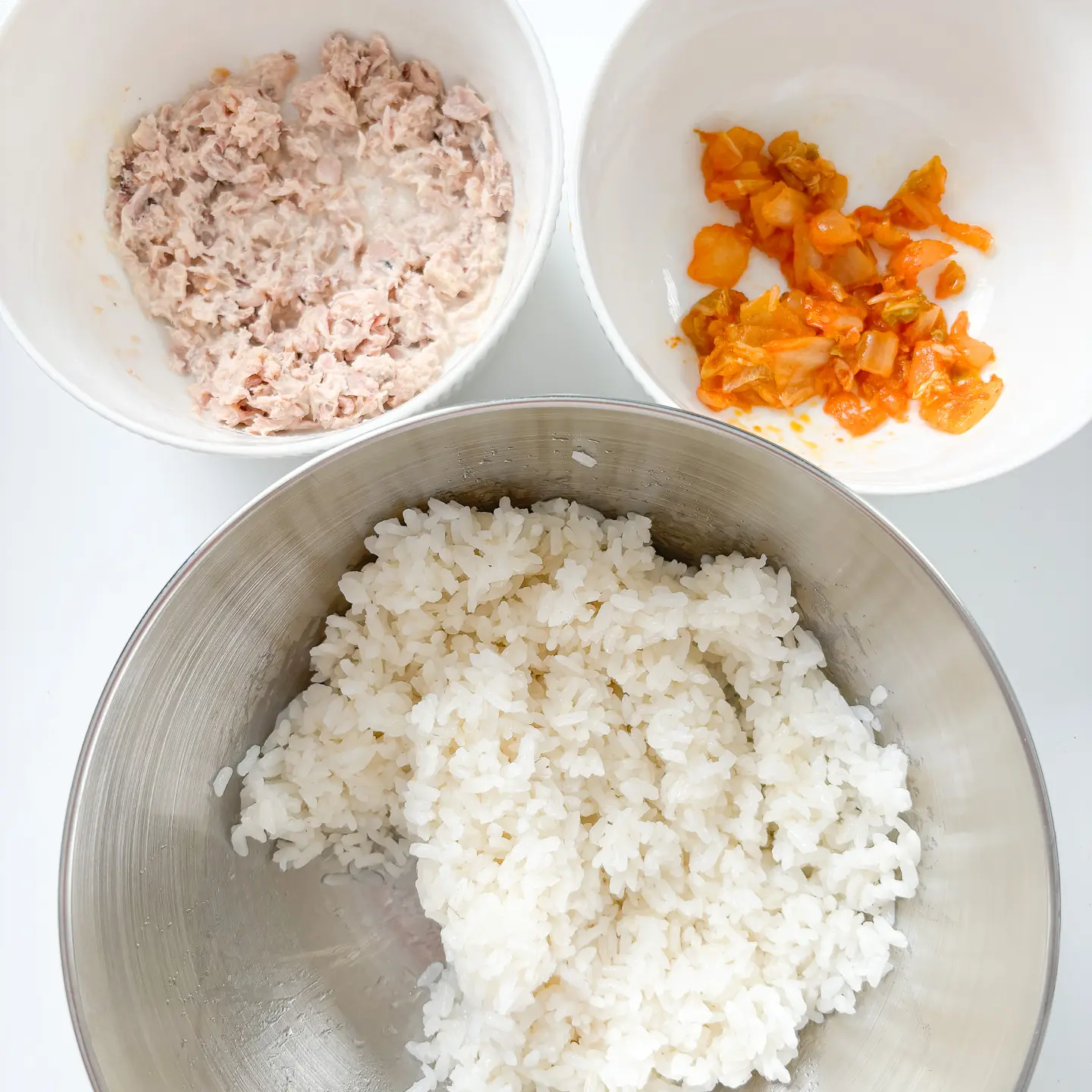
- Seasoned Seaweed (Gim)
You can either crush the seaweed and mix it directly into the rice or, like I did, roll the rice balls in it to coat the outside. Make sure to use seasoned gim for better flavor—it helps everything come together perfectly.
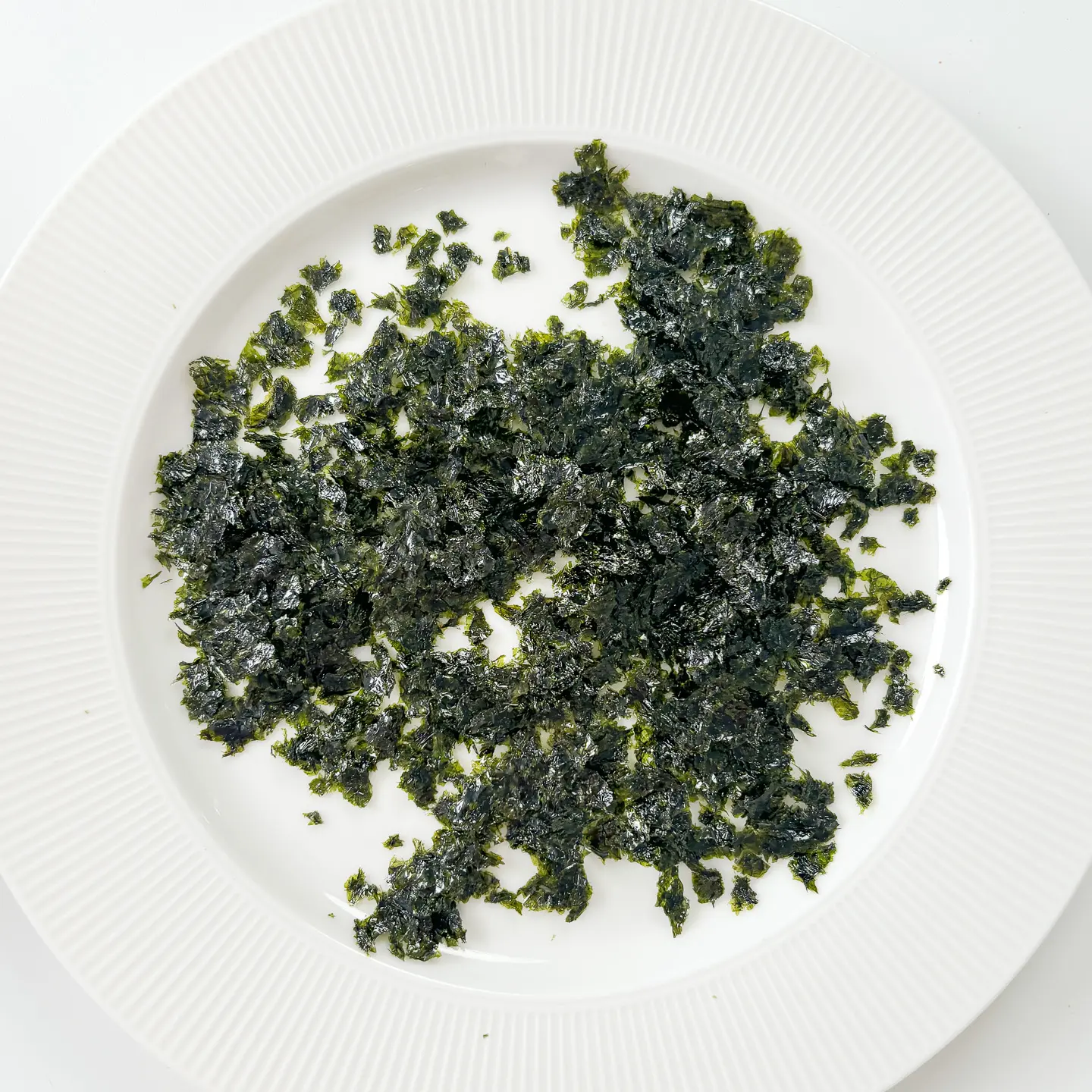
Types of Jumeokbap
Jumeokbap’s charm lies in the variety of flavors that result from mixing different ingredients into the rice. It’s not just kimchi and tuna; many people also use leftover side dishes, such as stir-fried anchovies. Below are some of the most popular types of jumeok bap in Korea.
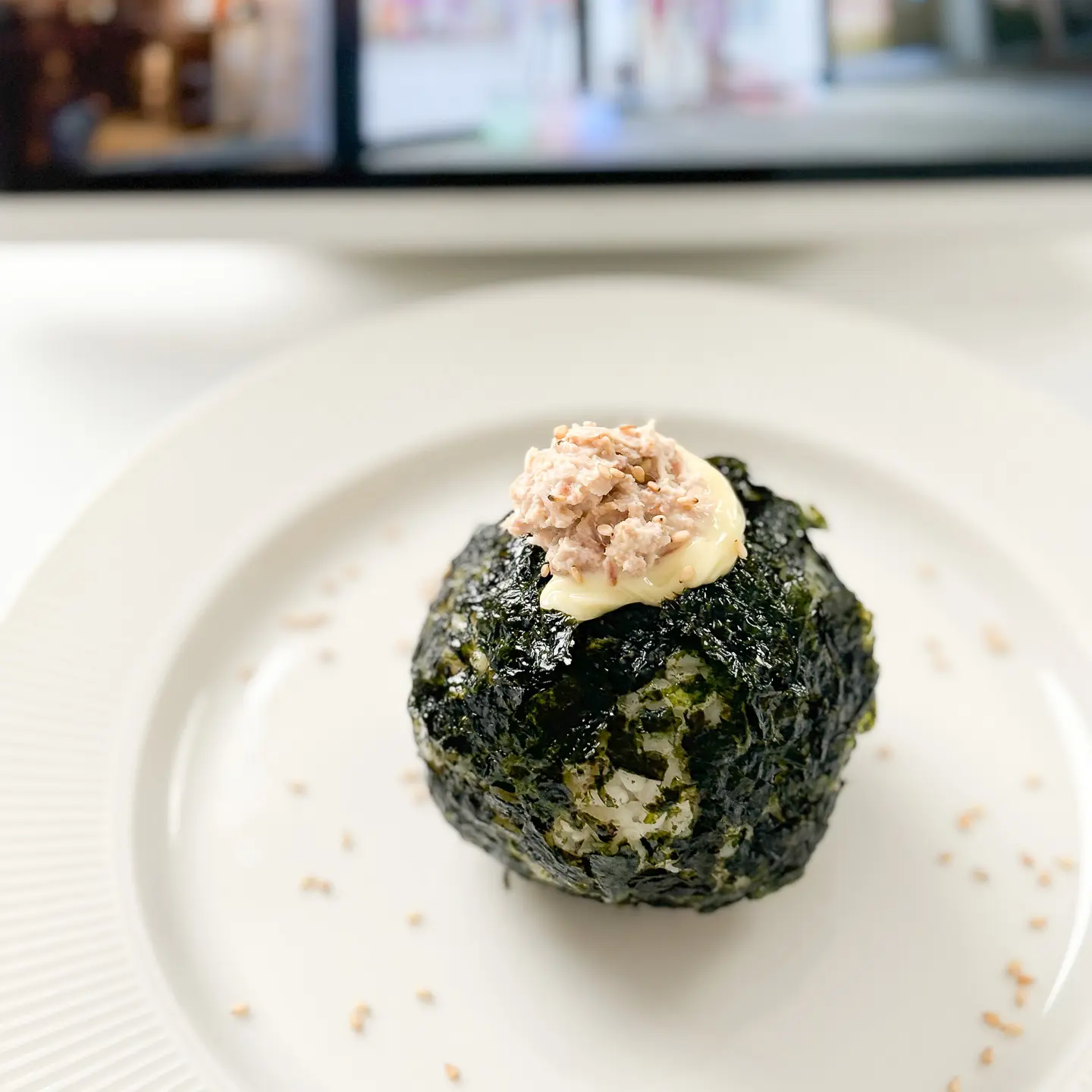
Tuna Jumeokbap
Tuna rice ball is one of the most common and beloved types of Korean rice balls. It is often eaten as a Dosirak(packed lunch) but is also a common side dish at Korean restaurants. For instance, when people eat spicy dishes such as chicken feet (dakbal), they often order this rice ball to offset the heat.
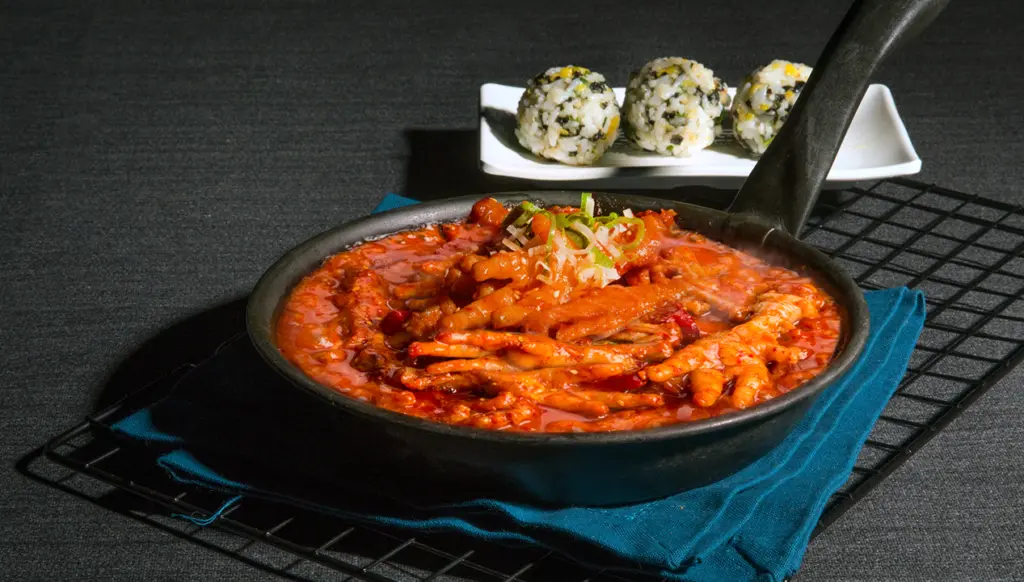
The recipe is simple: drain the oil from a can of tuna, then mix the tuna with mayonnaise, crushed seasoned seaweed, sesame oil, and a pinch of salt. Finally, roll the mixture into bite-sized balls. Some people also add finely chopped pickled radish (danmuji) to cut through the richness.
Spam Jumeokbap
This one is especially popular with kids in Korea. We use Spam in many dishes, from stews to fried rice. If you don’t have Spam, regular sausages or ham will work, too.
Recipe: Cut the Spam into small cubes and pan-fry them. Make some scrambled eggs as well. Mix the rice with the eggs, fried Spam, and crushed seasoned seaweed. Add a bit of sesame oil and salt to taste, then roll the mixture into small balls. It’s an easy yet satisfying meal.
Beef Jumeokbap
This version is great for kids’ lunch boxes (Dosirak) and is packed with protein, carbs, and healthy fats.
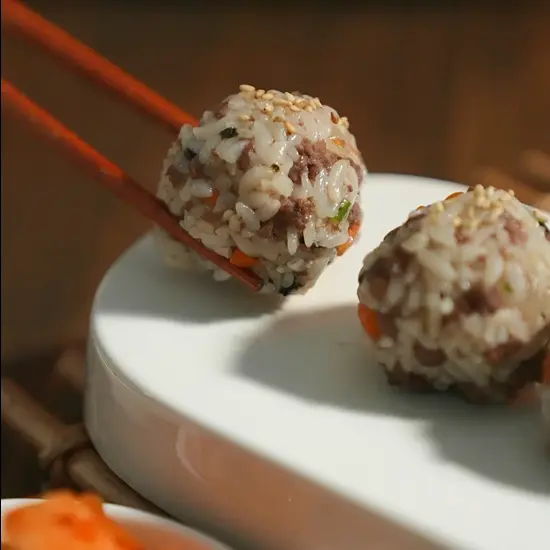
Recipe: Cook ground beef with a simple sauce made from soy sauce and sugar, similar to bulgogi marinade. Add finely chopped vegetables like carrots or zucchini and stir-fry them together. Mix the rice with the stir-fried beef and veggies, along with some crushed seasoned seaweed. Shape them into bite-sized balls. You’ll get a nutritious and flavorful snack that’s both filling and fun to eat.
Easy 15 Minutes Ground Beef Bulgogi Rice Bowl
Curious about the stir-fried beef recipe?
If you follow this ground beef bulgogi recipe, you’ll end up with a truly delicious stir-fried beef that tastes just like bulgogi.
Kimchi Tuna Combo
You might be familiar with the classic combination of tuna and mayonnaise. But kimchi and tuna, especially tuna mixed with mayo, might be a new combination for you. In this combination, the mayo helps blend the rich flavor of kimchi and the mild taste of tuna together smoothly and balances them out, while also adding a nutty creaminess. If you prefer a cleaner, sharper flavor, skip the mayo and enjoy the bold harmony of kimchi and tuna on their own. Ultimately, it comes down to personal preference.
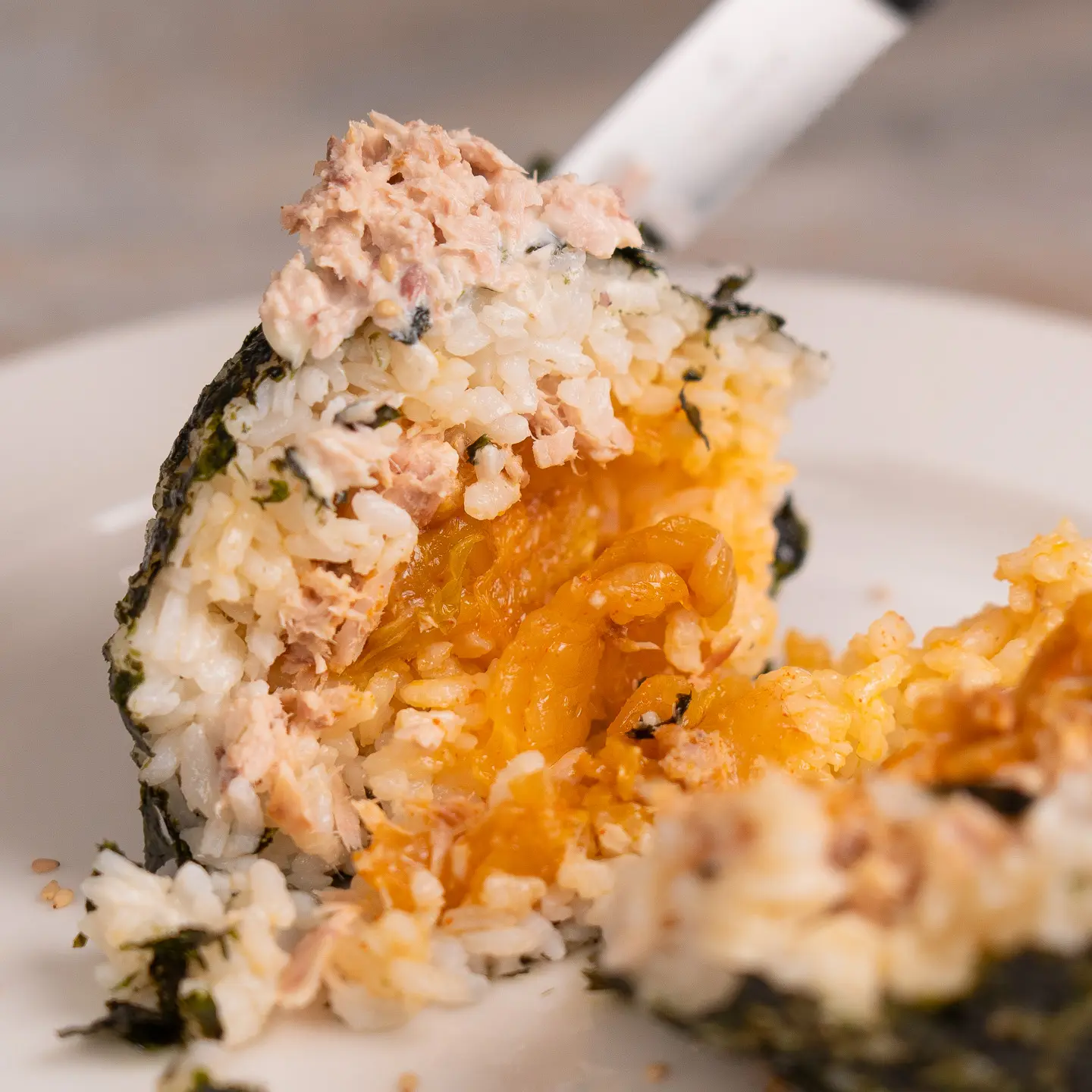
You can also make an incredibly delicious kimchi jjigae using kimchi and tuna. It’s one of the most common home-style recipe of tuna kimchi jjigae in Korea. Just one bite, and you’ll be surprised by how deep and flavorful it tastes.
Authentic Tuna Kimchi Jjigae (Kimchi Stew)
Ingredient Substitutes
- Seasoned seaweed: If you don’t have seasoned seaweed, use Furikake! It still tastes really good if you roll the rice balls in Furikake.
- Kimchi: If you don’t have kimchi, finely chop danmuji and mix it with tuna mayo—it also tastes really good. If you don’t have danmuji either, you can just skip the kimchi like in a basic tuna rice ball.
Foods That Pair Well with Jumeok Bap
Koreans usually don’t eat rice balls alone—they almost always enjoy them alongside other dishes. Especially soups or spicy foods are common companions. Here are some recommended pairings.
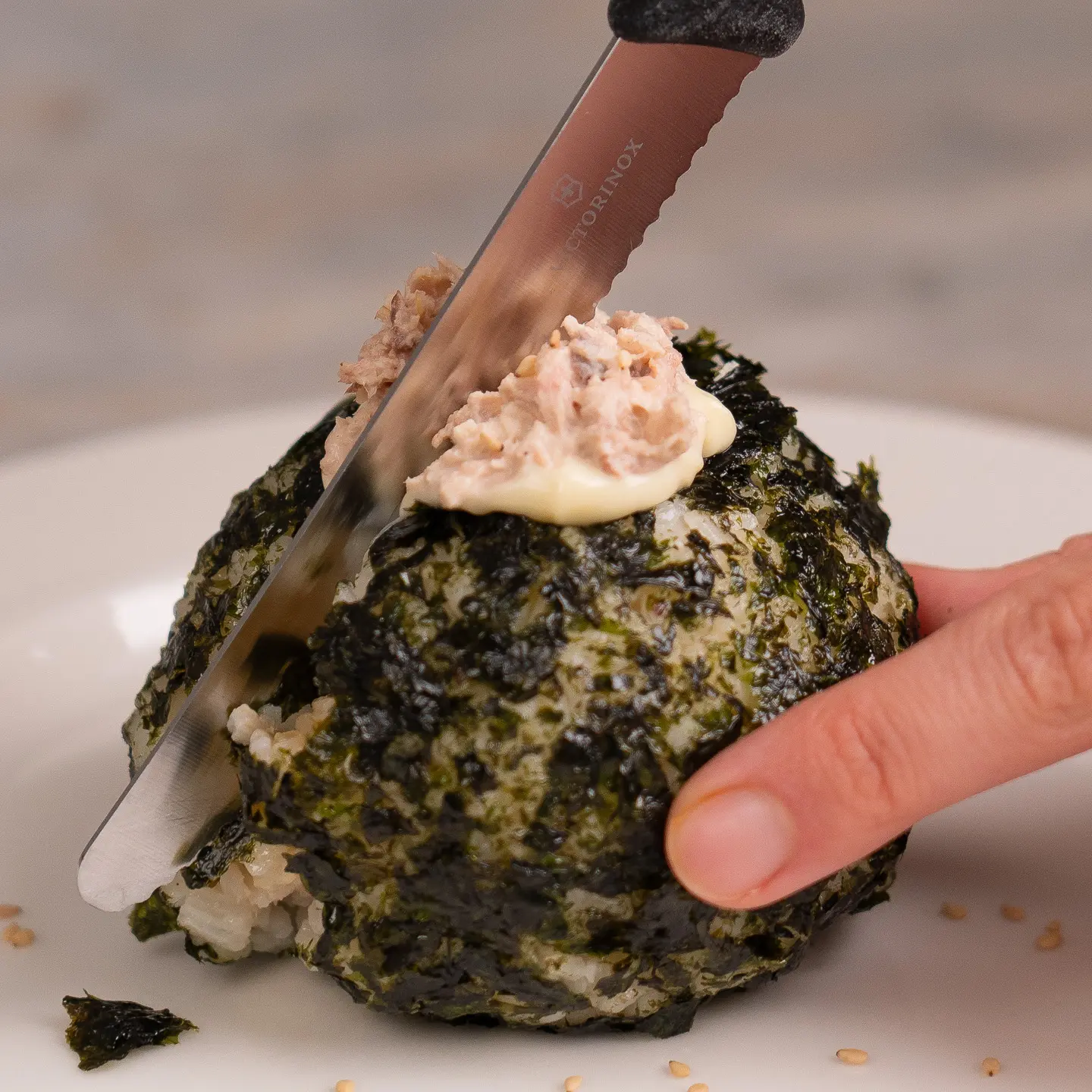
- Ramyun (Ramen): Some Koreans feel that Ramyun alone isn’t enough to fill them up, so they often eat side dishes with it. The combination of rice balls and ramen is one of the best pairings. Sometimes rice ball can feel a bit dry or hard to swallow, but after taking a bite of rice ball, sipping the hot and spicy ramyun soup adds a savory flavor and helps everything go down smoothly—making it a perfect match.
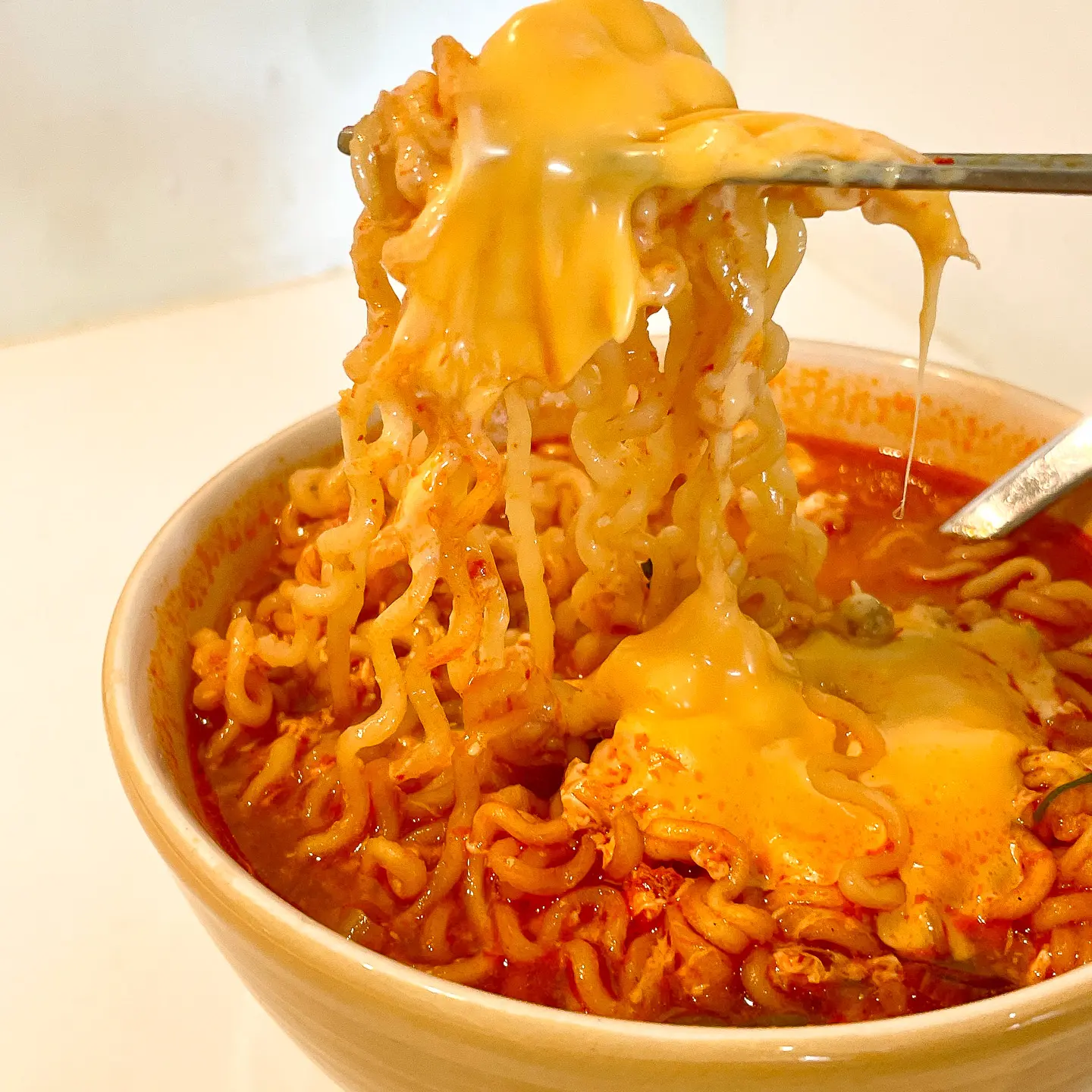
- Chicken Feet and Tteokbokki: When eating spicy dishes like chicken feet or spicy rice cakes (tteokbokki), rice balls can calm your burning tongue. Koreans also like to sprinkle some of the spicy sauce from these dishes onto their rice ball and eat them together—definitely worth trying. Tuna mayo rice balls are especially recommended for this.
- Danmuji (Pickled Radish): Eating danmuji as a side dish is also recommended. Especially with mayo-based rice balls like today’s recipe, the sweet and tangy danmuji cuts through the oiliness and refreshes your palate. The two go really well together.
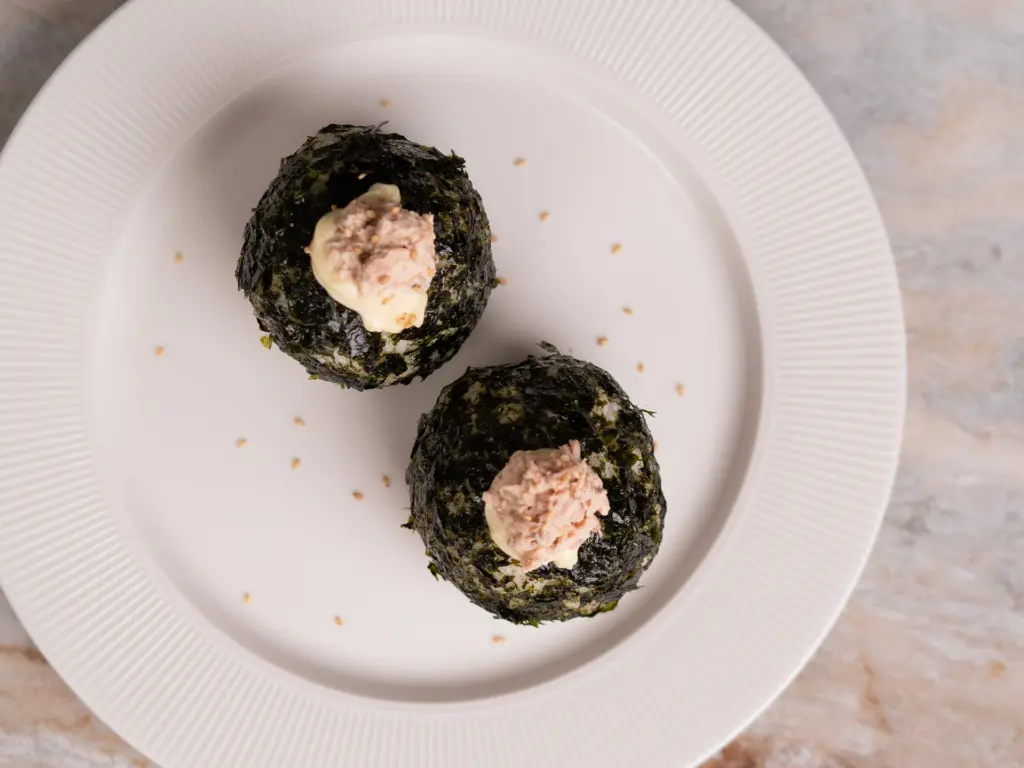
Get Ingredients Here
- Rice Cooker: US | BE, NL | UK
- Kitchen Scissors: US | BE, NL | UK
- Rice: US | BE, Nl | UK
- Sesame oil: US | BE, NL
- Kimchi: US | UK | BE, NL
- Seasoned Seaweed: US | UK | NL, BE
- Sesame Seeds: US | UK | BE, NL
Disclosure: Blonde Kimchi is part of the Amazon Services LLC Associates Program, an affiliate advertising program that allows websites to earn advertising fees by linking to Amazon.com and promoting products.
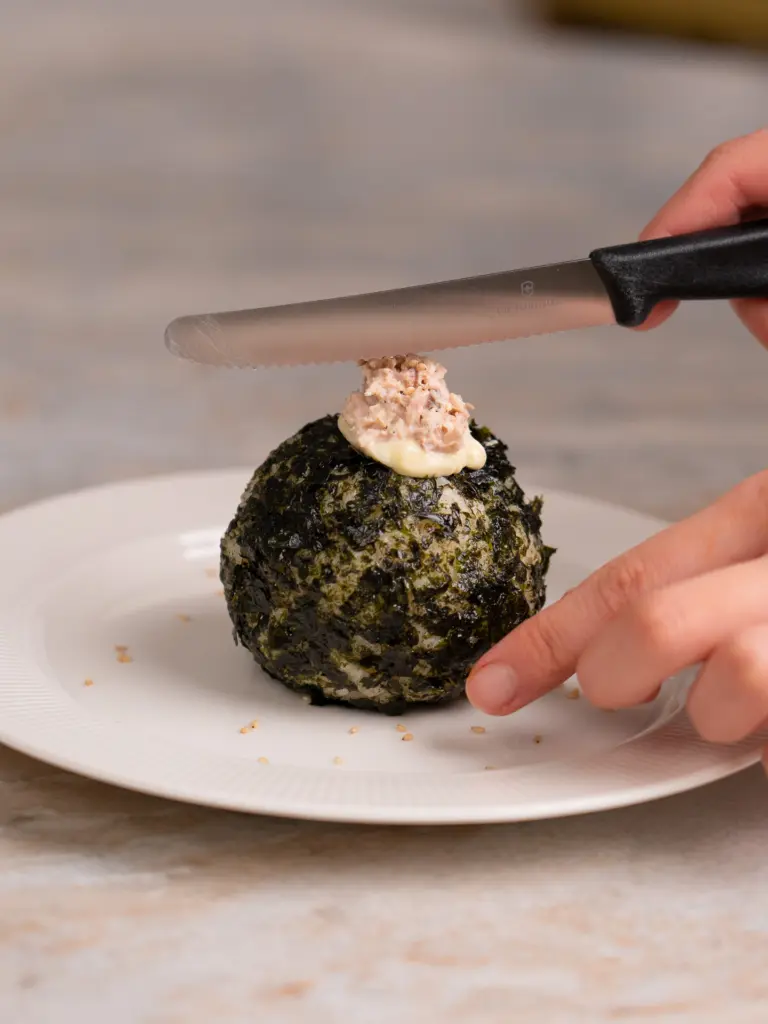
Easy Kimchi Tuna Jumeokbap
Equipment
Ingredients
Rice
- 1.5 bowls rice
- 1.5 pinches salt
- 2 tbsp sesame oil
Tuna Mayo
- 50 g canned tuna (drained)
- 1.5 tbsp mayonnaise
Stir-fried Kimchi
- 30 g kimchi
- 1 pinch sugar (optional)
- 1 tbsp cooking oil
Toppings
- 1 bag seasoned seaweed
- 1 pinch sesame seeds
Instructions
Season the Rice
- In a bowl, mix the rice with salt and sesame oil. Set aside.
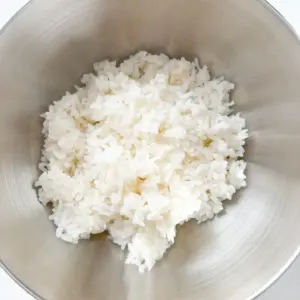
Make Tuna Mayo
- Drain the oil from the canned tuna.
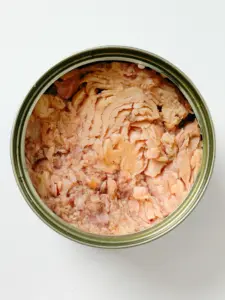
- Add mayonnaise and mix well.
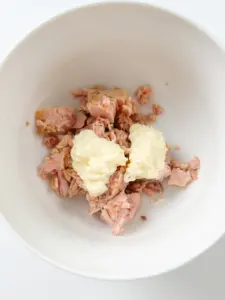
Prepare Stir-fried Kimchi
- Finely chop the kimchi.
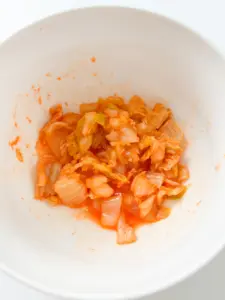
- Heat a pan with cooking oil, add the kimchi and a pinch of sugar, and stir-fry until fragrant
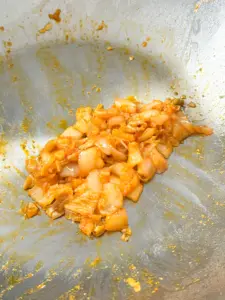
Assemble the Rice Balls
- Place a small amount of rice on your palm. Add a spoonful of tuna mayo and some stir-fried kimchi on top. Cover with more rice and gently shape into a round ball.
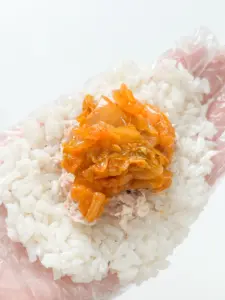
Coat with Seaweed
- Crush the seasoned seaweed in a plastic bag.
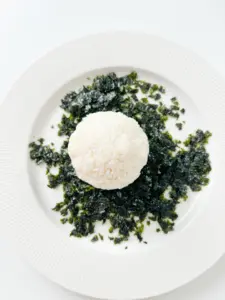
- Roll the rice ball in the crushed seaweed until fully coated.
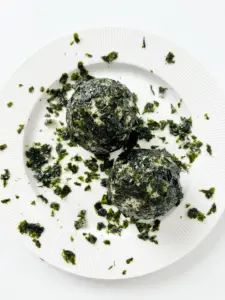
Garnish
- Decorate the top with a small dollop of tuna mayo and a sprinkle of sesame seeds.
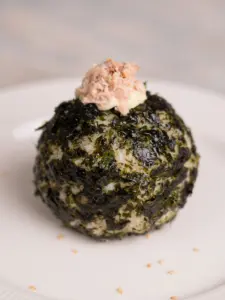
Kimchi Tuna Jumeokbap 참치 김치 주먹밥
- Jal meokgetseumnida! 잘 먹겠습니다!
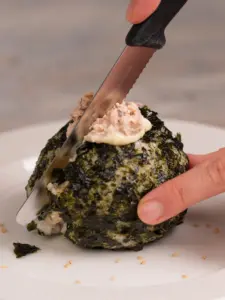
- The combination of creamy tuna mayo and stir-fried kimchi is absolutely the best!
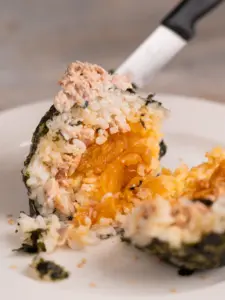

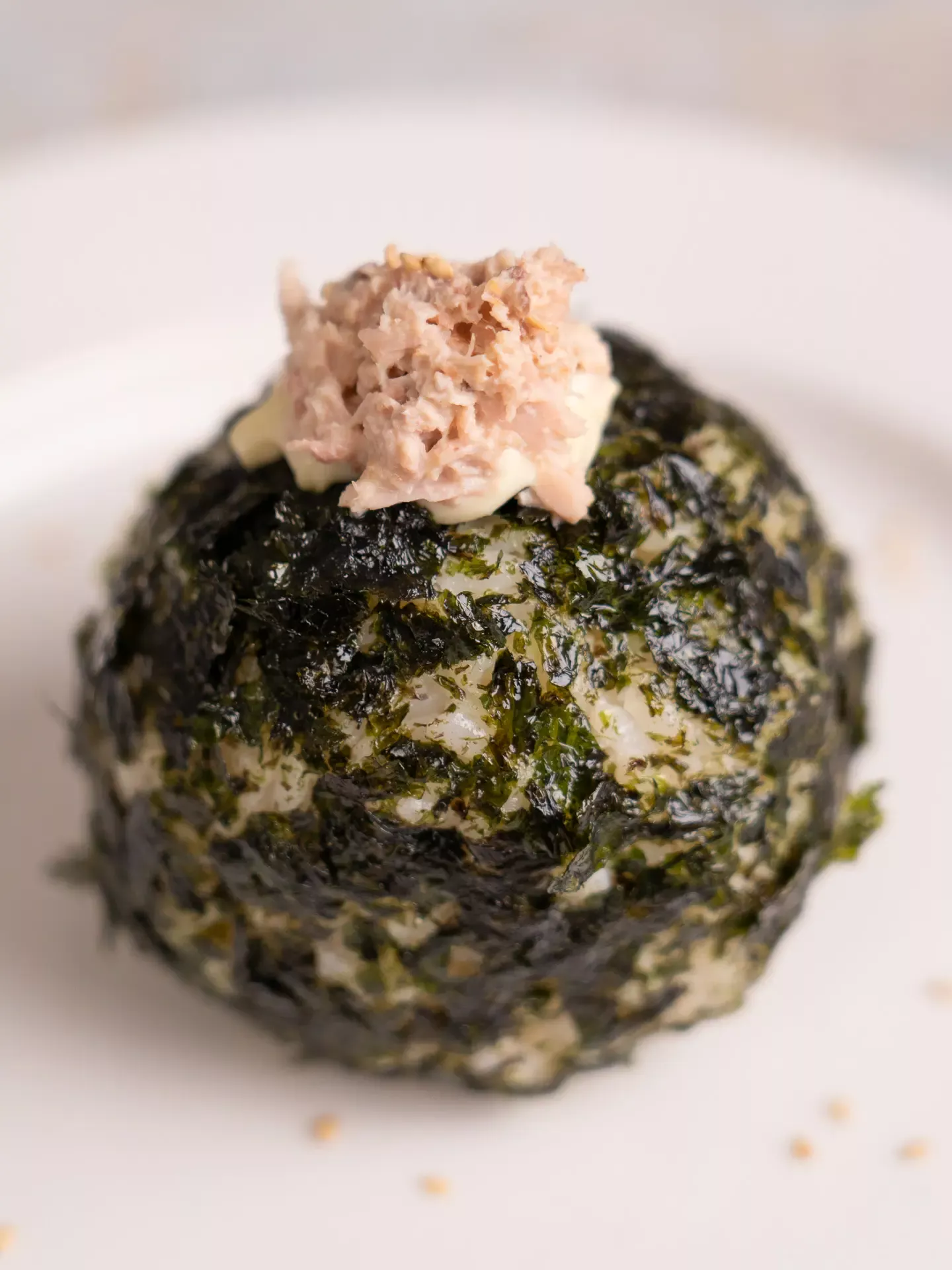
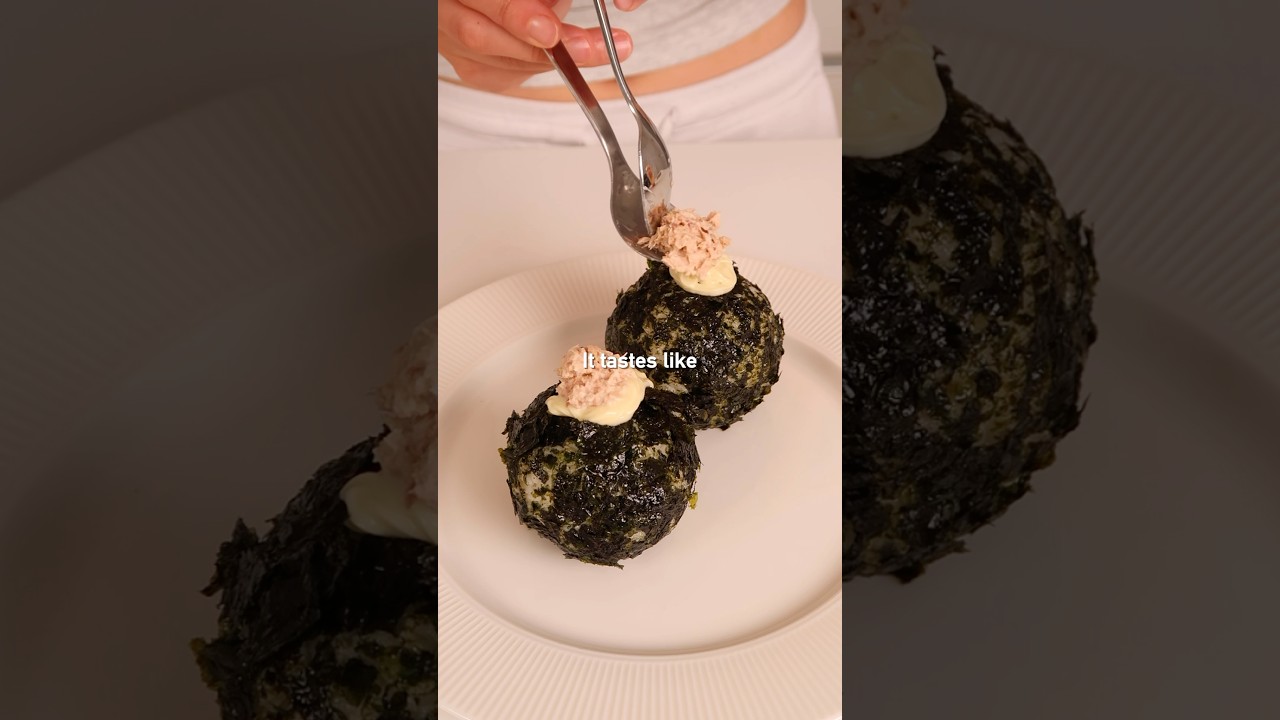
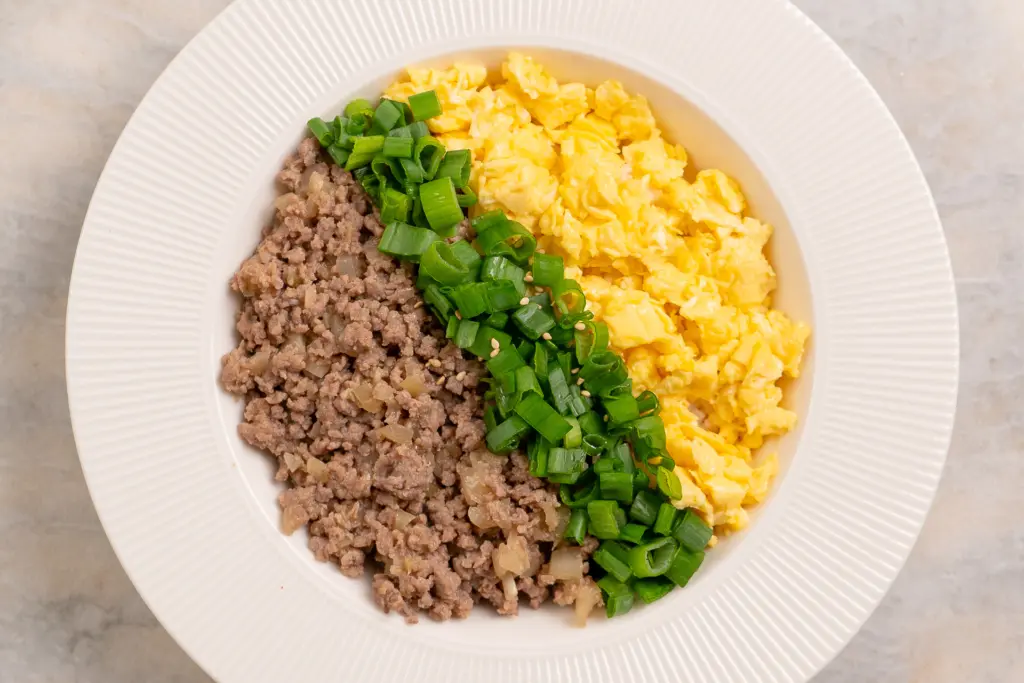
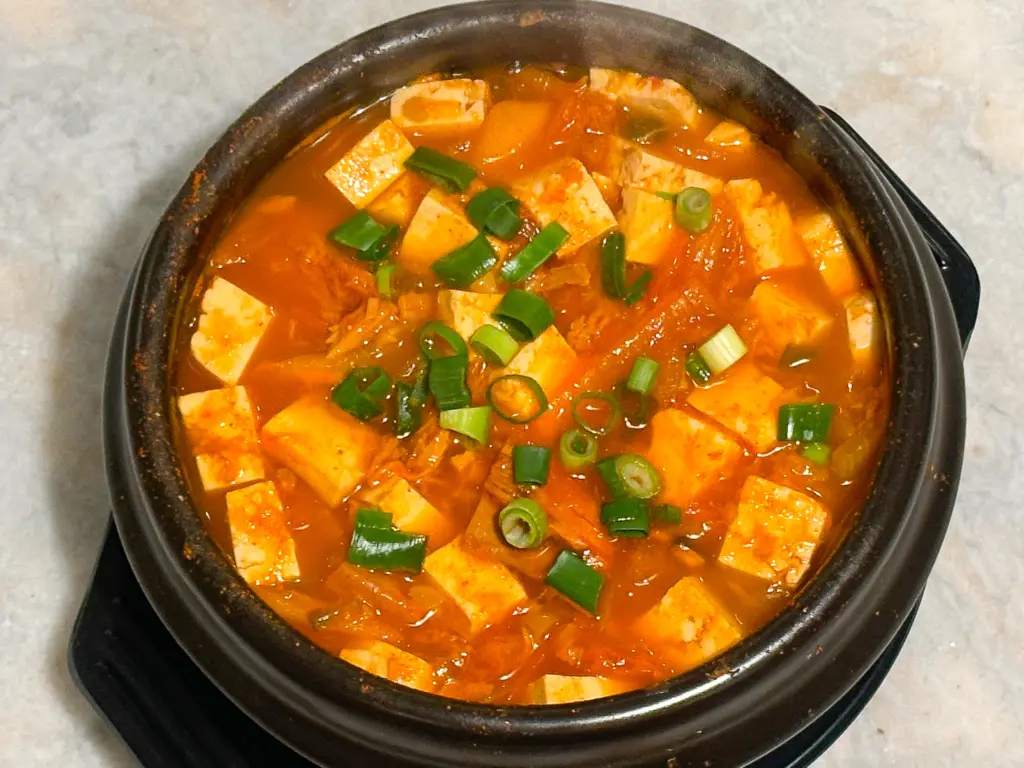



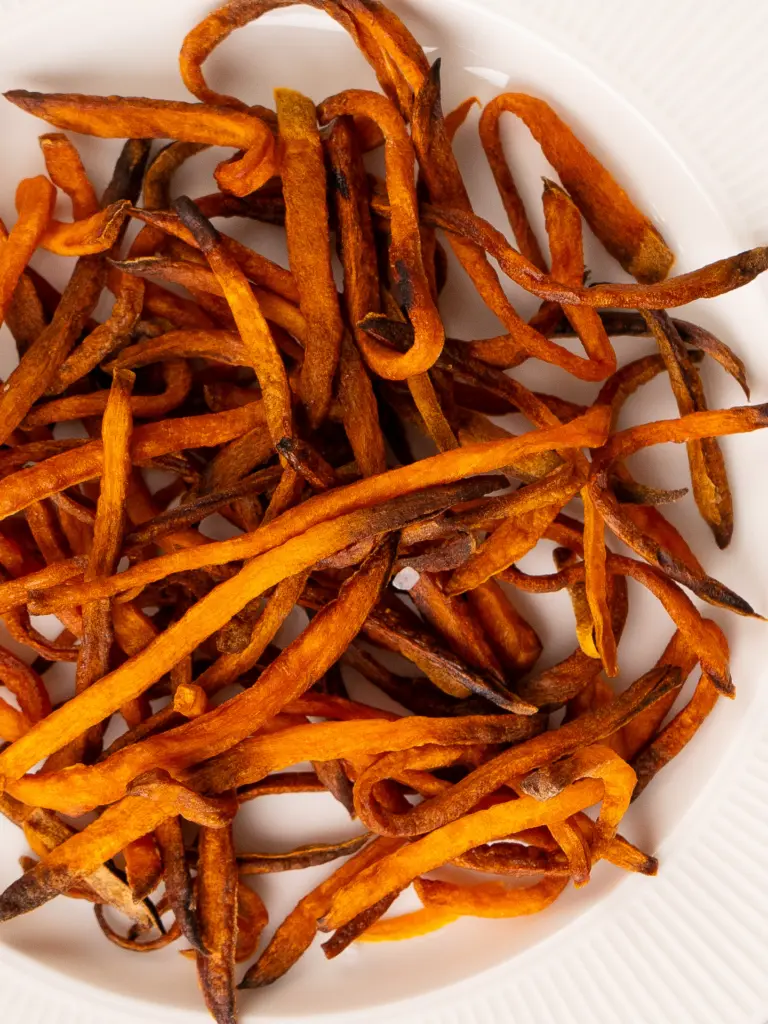
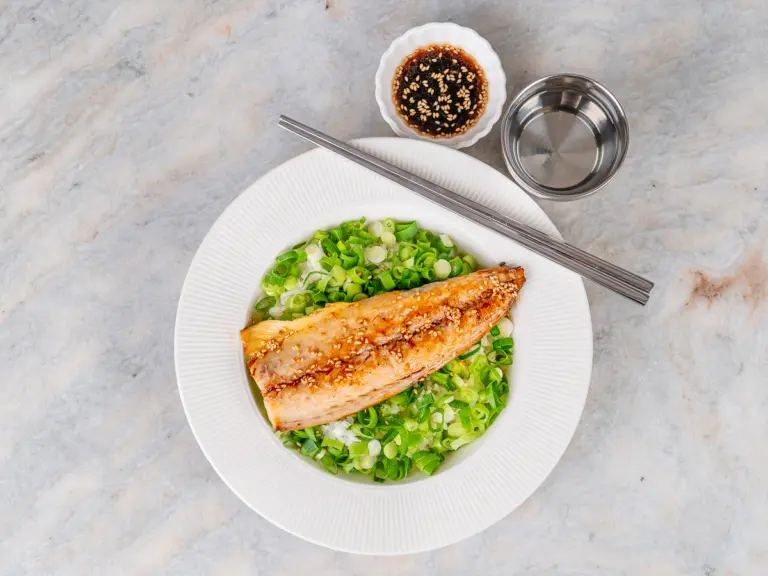
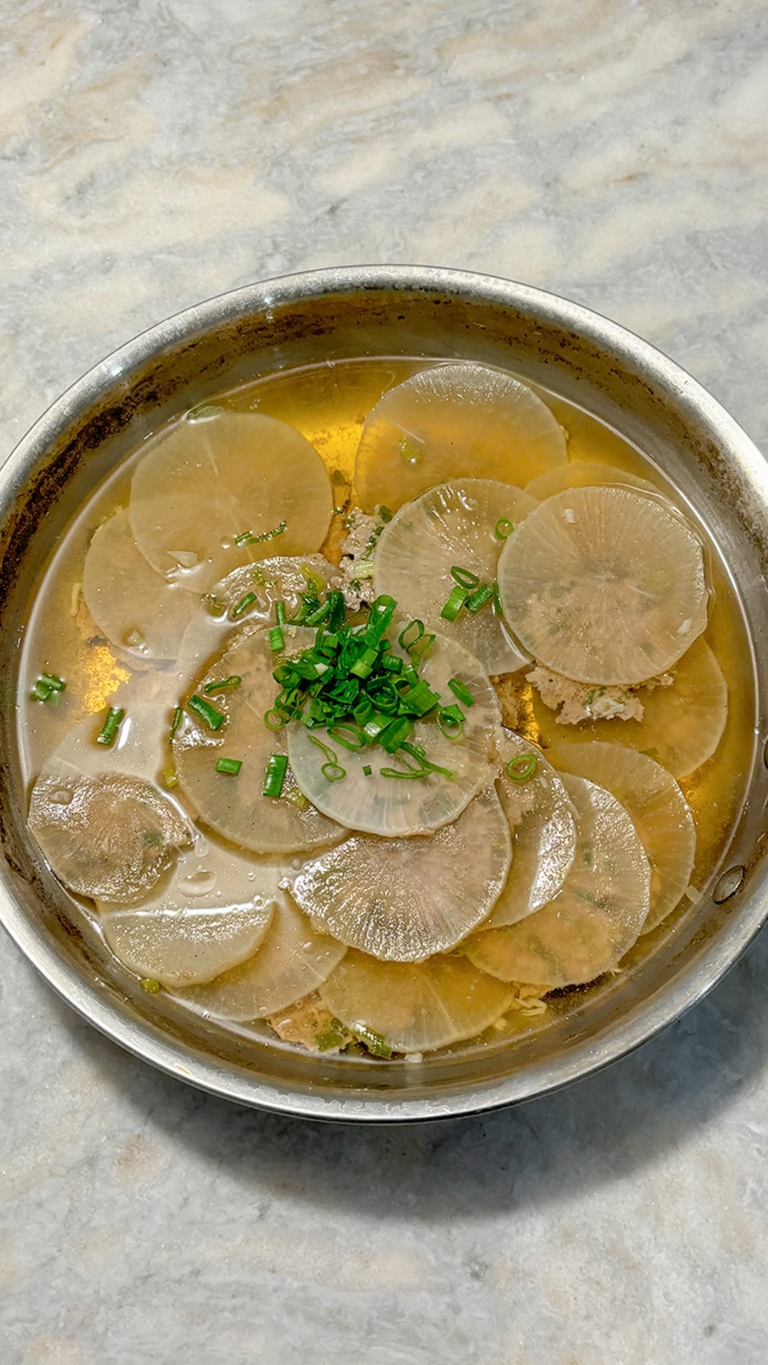
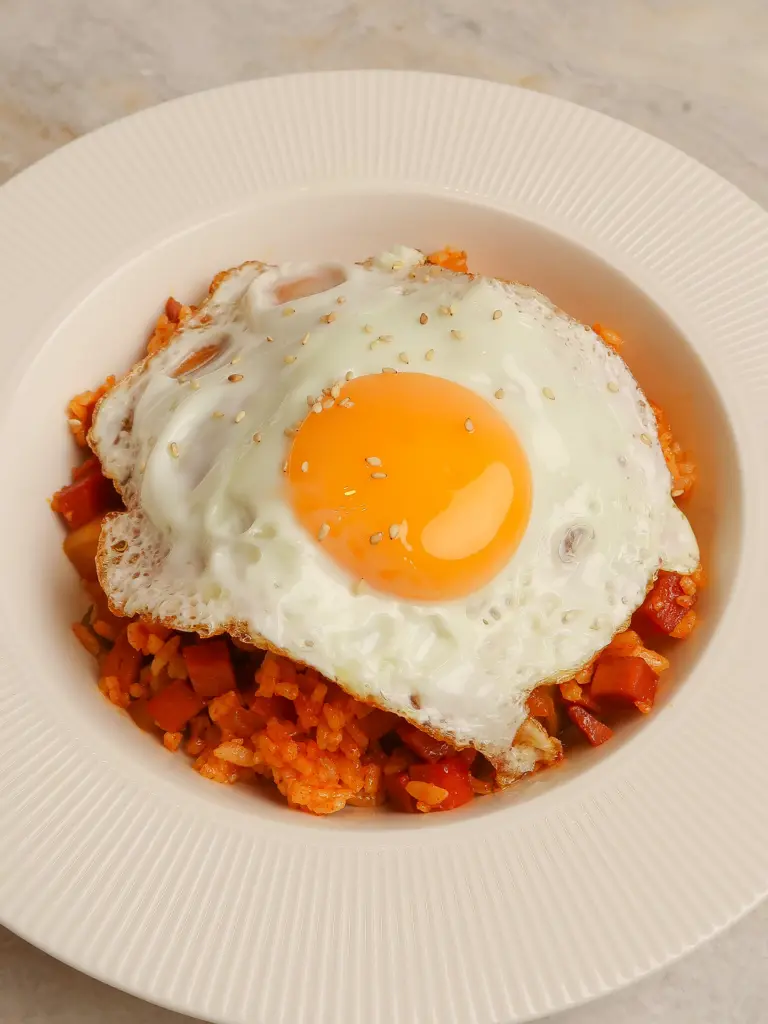

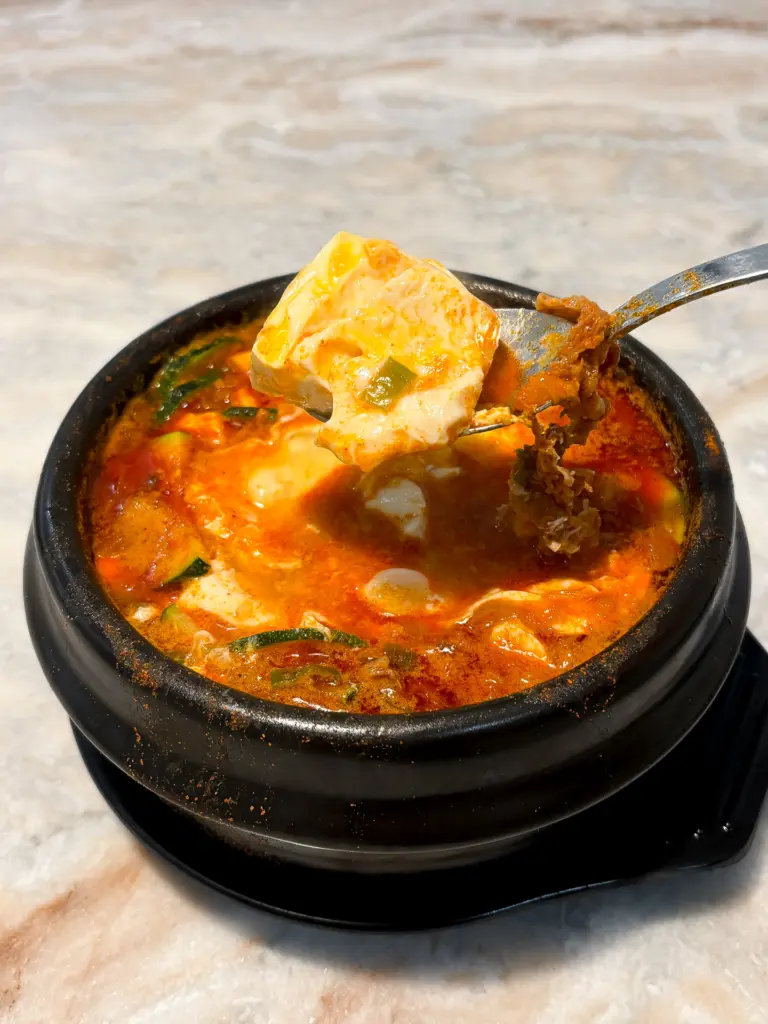
So tasty and so easy! Loved the combo of creamy tuna and spicy kimchi. Will definitely make these again for lunch!